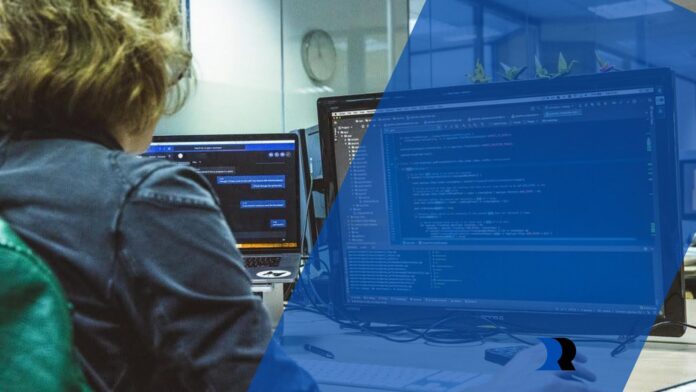All software has a life cycle. Even if it is still practical and widely used, there may be a point where it becomes useless after several updates. Software in this situation is known as legacy software. In other words, it is software that no longer has maintenance, support, or updates.
Once the system reaches its end of life, it becomes a legacy system. Additionally, manufacturers and solution providers no longer provide maintenance and service. Therefore, the system remains the full responsibility of the company. With good IT equipment, you can keep the system for a while, but a company cannot and should not stay with legacy software forever.
Risks of Working with Legacy Software
Security Issues
Software systems receive updates constantly, and that happens for several reasons. The main one is when they discover bugs in the system’s code. However, updates are essential because technology changes and new functionalities are required, in addition to system outages, for example, servers, that may occur.
Updates and maintenance help businesses stay secure from potential issues. There are companies with legacy software that patch the system to make up for the lack of these measures. However, these patches may not be compatible with the system or cause performance problems.
Lack of Compatibility with Other Tools
Technology advances, and consequently, programming languages change. That means that software developed ten years ago does not have the same programming language as a recently created one. Therefore, if a company continues to carry its system with a legacy one and wants to integrate it with other software, it is very likely that it will not be possible. Therefore, legacy software becomes a software island that cannot connect or communicate with any other system, making process automation impossible.
Lack of Flexibility and Decreased Performance
Legacy systems have a number of disadvantages. They become slower over time, and you cannot add licenses or expand modules or functionalities. Legacy systems are not slower because the code rusts but because their environment does advance and becomes more demanding. Therefore, if the system is not updated, it becomes obsolete compared to its context and loses speed.
On the other hand, not adding functionalities or users prevents the company from growing. With a legacy system, you reach a ceiling you cannot surpass. Therefore, the company even begins to lose effectiveness due to not being able to automate processes of its activity due to the system.
Lower Performance
Productivity and performance of employees are seriously affected. Legacy systems slow down over time, and for that reason, they are expected to lose quality, efficiency, and productivity.
What Can a Company Do If It Has Legacy Software?
Companies that are operating with legacy software have two options.
Continue with the System until It Is Unusable
When a company chooses to continue with legacy software, it must be aware of the problems previously mentioned in this article. Furthermore, there will come a point where the only option for the company will be to change because the system is no longer efficient.
Change Software
This option has two possibilities.
Progressively Change Software
This option takes more time but helps ensure better employee adaptation. This adaptation is crucial since it can be counterproductive if employees do not know how to use the new system.
Change the Software at Once
This possibility is faster. However, the adaptation time for employees is much less since they still do not know the system and do not know how to use it.

The success or failure of a software implementation can depend on whether employees adapt well to the system. Therefore, it is advisable for companies that wish to do it this way to train their employees in the new software.
An Alternative: Modernize Legacy Software
There are many companies today that manage legacy software. Employees trust them since they are systems that have been used for years. However, refusing to migrate to other software can cause problems for the company’s technological advancement. If the company has difficulty using new software, whether due to financial issues or other reasons, they will be forced to continue using legacy software.
Although the recommendation is to use new software, there are ways to continue using that system, such as using software product modernization. Software modernization begins by analyzing the need to continue using that program and the importance of its operation for the company. Then, they will proceed to evaluate the state of the system and make an estimate of the costs, including each phase of software development, including the hardware areas.
Benefits of Legacy Software Transformation
From improvements in performance and scalability to greater security and lower maintenance costs, the benefits of this transformation are countless. Most importantly of all, it quickly positions and adapts companies to changes in the market and customer needs.
Performance
More modern systems typically feature better speed, reliability, and efficiency compared to legacy software, leading to improved productivity and streamlining operations.
Security
Improving old systems mitigates security risks, implementing the latest protocols and protections, and protecting the system against various vulnerabilities.
Adaptability
New systems can be easily integrated with new technologies, allowing better adaptations for all those businesses with changing needs, and allowing for seamless scalability.
Business Agility
Transformation enables rapid responses to market changes and customer needs, enabling rapid changes and innovations, and improving competitiveness.
User Experience
Improvements in user interfaces and functionalities result in a better experience for both employees and users, improving their satisfaction and engagement.
Conclusion
Staying with legacy software can help maintain balance in a company, or it can also delay its technological development. However, it is possible to preserve it if a process is carried out to modernize the legacy software.

By modernizing the system you can then migrate to other more advanced software progressively, or continue using the same one. Each option has advantages and disadvantages, so take some time to consider the pros and cons of having legacy software and make the most appropriate decision for your company.


